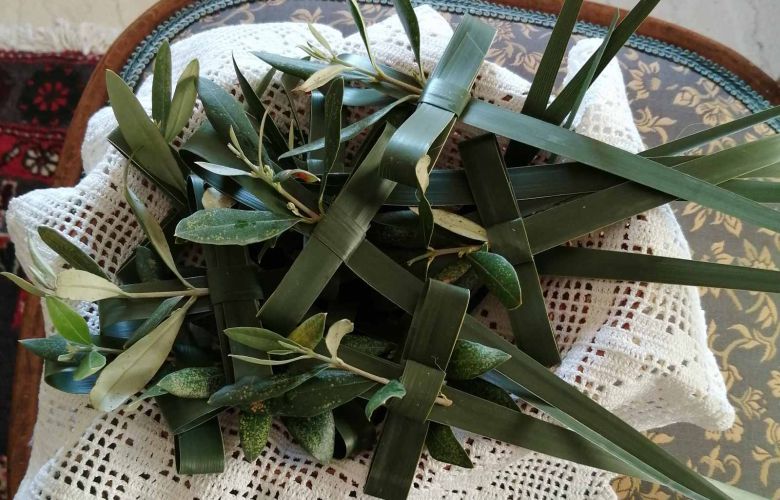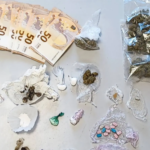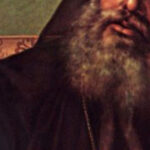How the churches adorn on the island on Sunday of the Saints
Sunday of the Saints at CorfuAnd in the churches, a custom is observed, with roots in the depths of centuries. During the evangelical narrative, the Jews welcomed Jesus Christ to Jerusalem, holding branches of palm trees, so in the temples the priests distribute to the faithful tender leaves of palm trees, braided in the shape of a cross.
These are the Corfu Vagia, which also adorn the churches on Sunday. Their technique is traditional in Corfu. They are knitted in cross and star shapes, adorn the candles, images and banners of the churches.
In every temple, the priests, along with the women of the parish from the previous one, on Saturday of Lazarus, make Vagia in the church. Many loyalists especially in the villages, also make their own homes, one for each family member, place them in discs or baskets called Vagiofora and take them to church to bless. In fact, they adorn them with olive sprigs and violets.
The Corfuans keep the vagi in the iconostasis of the house for the blessing and protection of the family.
On Sunday, in Corfu, the feast is double, as the St. Spyridon scene is being wrapped in, in memory of the island’s exemption from the plague that in 1629. Vagia have their own place, both on the Holy Larnaca of the Saint and the Larnaca.
In Corfu villages, they are used to the beaches, that is, to hit each other with Vagia, to “give” the power of the green branch to the one who receives the blow. In the past, carols were also chanted, he was pointed out in the EIA.

In the book of Corfu, by priest Athanasios H. Tsitsa, we read that Vagia, according to sources from the Corfu Historical Archive, employed references and orders of the Corfu Protests to the Churches of the Churches, from the 17th century. In texts of that time, we learn the anxiety of the newspapers, to collect the needed to meet the needs of the people, though some did not receive any vagi … We learn that in the mid -17th century, the vagi, braided by hearts, Prosecutors … in the city, separated from the common crosses, they were knitted by others, different more formal ones who were golden, with a gold leaf. They were the so -called Kavallierats, because they seem to be understandable with the crosses of the knights. ” Shortly thereafter in the early 18th century we were informed of quarrels and quarrels, between priests and laymen, about the decoration with Vagia, until the command of the great protopapa of the city will not be knitting crosses, but only to give palms and olive branches.

Priest Athanasios H. Tsitsas completes his historical research on Vagia, noting:
“Vagia, once again survived their ornaments and their protagonists and orders to make the Corfu houses adorable and give their characteristic tone in preparation for the memory of the passion and the Resurrection of the Lord, so strongly in ecclesiastical ceremonies. In 1947, a circular of the Metropolitan prohibited the distribution of the beams to the houses came in 1947. Is the adventure of the beams finished? Maybe yes, maybe not. However, to date the beautiful custom still lives and adds, a characteristic note to the Corphic Easter Agreement. “








